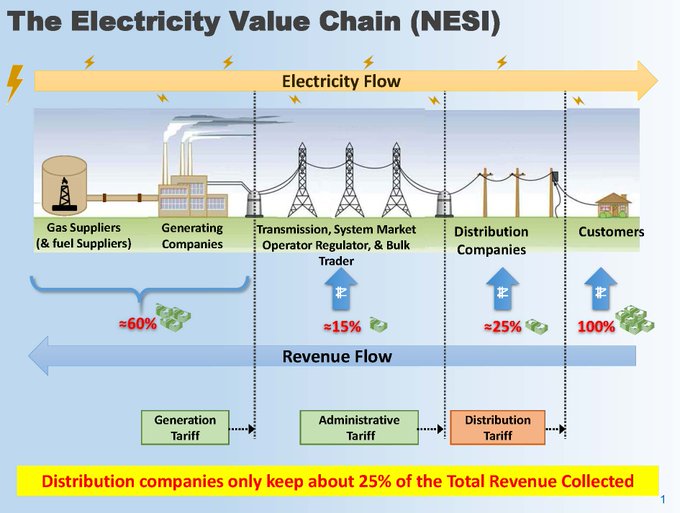For most Nigerians, light comes and goes, but how that happens remains a mystery.
In a series of posts shared on X, a Nigerian named Habu Sadeik writes in simple, clear and concise manner, how electricity gets into our homes in Nigeria.
HOW ELECTRICITY WORKS IN NIGERIA
Let’s educate ourselves today on how Nigeria Electricity works from source to consumption. I will try to be as layman as possible. No engineering jargons I promise, though I myself not an engineer but aspiring engineer-accountant
There are 3 kinds of important station on how electricity is distributed.
1. Generation Station
2. Transmission Station
3. Disco Station or Injection Substation

1. Generation Station is where they generate the electricity either using gas or water (hydro).
Electricity is generated far away from Shiroro in Niger state transmitted to Ebonyi or from Sapele in Delta state transmitted to Potiskum or from Egbin in Lagos transmitted to Abuja and so on.
When electricity is generated from Shiroro for example, they transmit or transport it at a high voltage of 330kv down to the intended destination.
When you’re travelling by road, you see those big towers with huge cables of about 3 to 5 in number are actually the 330kv being transmitted from generation stations.
330kv voltage is used in order to transfer electricity is from far away location. You can Imagine from Niger State to Maiduguri or from Geregu in Kogi to Yola.
Generation Stations duty is just to generate and sent it to Transmission Station which is popularly called the TCN.
This brings us to the second station which Transmission station.
2. Transmission station (TCN) is to receive electricity from Gencos at a high voltage of 330kv and reduce the voltage down from that 330kv to 33kv
You can see, point A generate and sent 330kv while point B receive reduce it from that 330kv to 33kv. 33kv voltage is suitable for transporting electricity across villages and inter-town. this is done to make sure that people get the requisite voltage & current that will power
Their appliances.
Note 2 points here.
a. Gencos control the 330kv voltage line
b. TCN control the 33kv voltage line Lets proceed.
TCN reduces that 330kv voltage using big transformers popularly known as power transformers in MVA capacity. The transformers accept light in 330kv and reduce it down to 33kv.
3. Disco Stations or Injection Stations: This is purely under the control of discos.
They received light from TCN at a voltage of 33kv and use their own power transformers also to reduce it to 11kv voltage.
The 11kv voltage is what the discos are using to transmit light to peoples home directly….
but wait 11kv is too big to enter your home, it usually enter inside the transformer in your local area.
The transformer in your local area accept that 11kv voltage and further reduces it down to 0.415kv. That 0.415kv is a 3-phase voltage comprise of 0.220kv each. I know you will be confused here but yes, 0.220kv by 3 is equal to 0.415kv. (allow engineers with their jargons, don’t ask further they will confuse you)
This means the light that goes to your socket and other appliances is averagely 0.220kv or 220 volts.
Red phase = 0.220kv
Blue phase = 0.220kv
Yellow Phase = 0.220kv
Total RYB = 0.415kv (which is the transformer output)
Some vital points to note.
When you have serious blackout lasting for several hours, it may probably be from the TCN or even from Gencos (system collapsed). Without discos getting supply from TCN, they do not have light to distribute.
Sometimes discos will have supply from TCN but not enough to distribute it to all the town.



